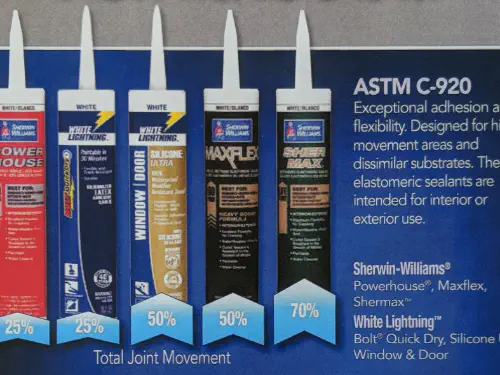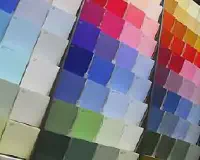Caulk is a vital part of any exterior painting or maintenance job, but sealing every gap or seam can do more harm than good if you don’t know where to draw the line.
Understanding Caulk’s Role
Caulk is designed to seal joints around windows, doors, and trim. It prevents moisture infiltration and creates a seamless, unified look, especially on exterior surfaces. Because it smooths over gaps, cracks, and small crevices, caulk contributes significantly to a home’s curb appeal and structural integrity when used correctly.

Why Proper Caulking Matters
When done properly, caulking hides hairline cracks or joints without drawing attention. A precise application—often using a damp rag to wipe away excess—keeps the repair nearly invisible. However, misusing caulk can trap water where it shouldn’t be, causing rot, mold, and expensive damage in the long run. Below are the top three places you should never caulk for exactly this reason.
Sealing every gap or seam can do more harm than good if you don’t know where to draw the line.
1. Bottom Edge of Siding
The bottom edges of clapboard siding or shake shingles are critical for ventilation and moisture release. Moisture inevitably finds its way behind exterior sheathing—whether from rain, humidity, or simple condensation. Sealing off these edges traps that moisture, potentially leading to decay and mildew.
Letting Moisture Out
Wood needs to “breathe,” and trapped moisture will look for a way out. If no path exists, the siding can rot from within, eventually cupping or warping. While filling every gap for a smoother look may be tempting, doing so often creates far worse damage over time.
Balancing Appearance with Function
A small gap along the bottom edge of siding may not look perfect, but it serves an essential purpose. To maintain curb appeal, rely on quality exterior paint and selective, strategic repairs rather than closing off crucial ventilation points.
2. Soffits
Soffits bridge the gap between a home’s exterior wall and the roofline. While you might think caulking every joint prevents water intrusion, excessive sealing in this area can trap water and cause rot, mold, or mildew.

Think Like a Raindrop
Water naturally follows the path of least resistance. If you seal the bottom edges and joints of soffits, any leak or overflow from gutters has nowhere to go. Over time, this can lead to pooling water that saturates the wood, defeating the entire purpose of moisture management. Instead, trust your roofing and gutter system to guide water away.
If you seal the bottom edges and joints of soffits, any leak or overflow from gutters has nowhere to go.
Preventing Costly Issues
Even minor flaws in your roof or gutters can let water into soffits. If it’s all sealed up with caulk, that water remains inside, soaking into wood and inviting decay. Leaving soffit joints slightly open ensures moisture can escape before it causes significant damage.
3. Storm Windows
Storm windows are typically installed over existing windows to improve insulation and reduce heat loss. While it might be tempting to caulk them shut for an airtight seal, doing so can lead to trapped moisture—one of the worst problems a homeowner can face.
The Moisture Problem
Moisture buildup inside storm windows can warp wooden frames, foster mildew, and damage your home’s original window structure. Weep holes at the bottom of storm window frames are meant to let water out, but they don’t do much for condensation. Once you seal storm windows in, any trapped moisture stays there, potentially rotting the frames and harming the window opening.
Why You Should Avoid Sealing
If you’ve ever tried to remove storm windows that were permanently sealed, you know the damage that can occur—from paint chipping to cracked glass or warped frames. Let your windows breathe and allow for easy maintenance instead. Sealing storm windows can create more problems than it solves.
Application Tips for Exterior Caulking
A good rule of thumb is to envision how water travels:
Seal joints around window edges, door trim, and other purposeful seams to keep out rain and drafts.
Avoid sealing essential vents or drainage paths like the bottom edges of siding, soffit joints, and weep holes in storm windows.
Aim for neatness by smoothing or wiping away extra caulk with a damp rag. Sloppy, heavy lines not only look unprofessional but can leave gaps.
Knowing When Enough Is Enough
Some contractors claim they “caulk everything,” but that approach often backfires. Proper caulking strikes a balance between sealing out damaging moisture and allowing necessary ventilation. By applying caulk only where it’s beneficial, you’ll protect your home while giving it the ability to breathe.
Final Thoughts
Caulk works wonders for appearance and protection, but only when you know where—and where not—to use it. Bottom edges of siding, soffits, and storm windows should remain unsealed or only selectively caulked to prevent moisture issues. When in doubt, consult a professional or gather more information to ensure you’re making the best choices for your home’s longevity and curb appeal.



